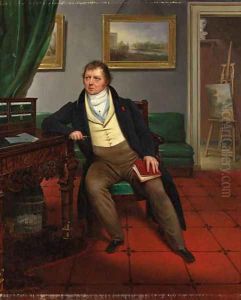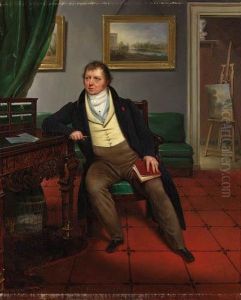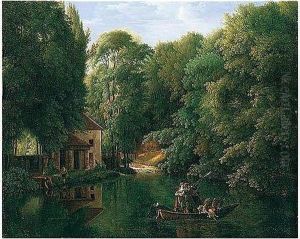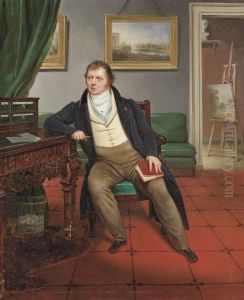Alexandre-Franois-Louis Comte De Girardin Paintings
Alexandre-François-Louis, Comte de Girardin was a French landscape designer, writer, and government official who left a notable mark on the landscaping aesthetics of his time. Born on June 23, 1776, in Paris, France, Girardin came from a family with connections to the royal court. His father was Stanislas de Girardin, a statesman, and his mother was Sophie Lalive de Bellegarde. Growing up during a period of immense political upheaval, Girardin's early life was influenced by the events of the French Revolution and the subsequent changes in French society.
Girardin's contributions to landscaping were influenced by his travels in England, where he was inspired by the picturesque and naturalistic English garden style, which contrasted with the formal French gardens of the 17th and 18th centuries. He became an advocate for the integration of the English garden style into French landscape design and is best known for his work at the park of his family estate, the Château d'Ermenonville, located northeast of Paris. The park of Ermenonville became a model of the picturesque garden in France and was visited by many, including the philosopher Jean-Jacques Rousseau, who spent the last weeks of his life there and was initially buried on the estate's Isle of Poplars.
Aside from his landscaping work, Girardin engaged in a variety of other pursuits. He served in the military during the early revolutionary wars and was a member of the Corps législatif under Napoleon. He was also a writer and thinker, contributing to discussions on politics, social reform, and aesthetics. His writings include 'De la composition des paysages' (On the Composition of Landscapes), which was published in 1777 and outlined his theories on garden design and landscape aesthetics. The book emphasized the importance of harmony between architecture and the natural environment and argued for the creation of landscapes that evoked emotional responses.
Girardin's influence extended beyond landscaping to broader cultural and political spheres. He was involved in the debates on the abolition of slavery in France and its colonies, and he held various administrative posts throughout his career, including that of a prefect under Napoleon's regime. His ability to navigate the tumultuous political landscape of the time allowed him to continue his work and maintain his influence across different governments.
Comte de Girardin passed away on April 27, 1855, in his estate at Ermenonville. His legacy is reflected in the ongoing appreciation of the naturalistic landscapes he advocated for and in the survival of the Ermenonville park as a testament to his vision. Girardin's work and ideas contributed to a shift in the understanding of the relationship between man and nature, influencing the development of landscape architecture and garden design in France and beyond.



